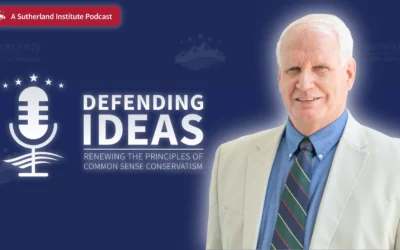
Written by Christine Cooke Fairbanks
September 20, 2023

Americans’ confidence in higher education is down – again. A recent Gallup poll says only 36% of Americans have “a great deal” or “quite a lot” of confidence in higher education as of 2023. That’s a 12% drop from 2018 (48 percent) and more than a 20% drop since 2015 (57%).
The survey did not ask follow-up questions as to why confidence has been waning in this area but notes that previous polling showed Democrats expressed concerns over costs while Republicans take issue with politics in higher education.
According to Gallup, Americans feel less confidence in a number of institutions. Perhaps the overarching issue is that Americans feel institutions are not serving them in the way they’ve expected.
At the same time, data on postsecondary education shows that education beyond a high school diploma is generally still worth it. Many variables – which depend on a person’s unique situation – can make a difference.
Like in the K-12 education space, choices and innovations help students meet their unique needs. Can choice and innovation in higher education help renew confidence in higher education?
If it creates new opportunities that allow students to feel as if the inputs are worth the outcomes, it seems like it can.
Reducing cost and time for employable skills
Some institutions of postsecondary schooling are already making strides in reducing costs to acquire employable skills. Take for example the newest innovation in BYU-Pathway Worldwide’s programming. The school now offers a fully accredited three-year bachelor’s degree. They have accomplished this by crafting a degree that requires only 90 credit hours to complete instead of the traditional 120 credit hours, which is the real innovation.
Some institutions offer a three-year degree by trying to pack the same amount of content into a shorter time span. Reducing the credit hours is a change that aims to boil the content down to give you exactly what you need to graduate with a useful and practical bachelor’s degree.
This change is increasingly relevant since the vast majority of Gen Z students report valuing postsecondary education but are increasingly interested in alternatives to the four-year college degree. These students are asking if the price of college – at least four years of your life followed by 10-25 years paying off tens of thousands of dollars in student loans – is worth it. Nearly half of this demographic want an education they can complete in three years or less.
BYU-Pathway Worldwide has also been at the forefront of giving students immediate value at a low cost relative to other higher education institutions (tuition is $7,200 for a bachelor’s degree, before scholarships or other financial aid). The school offers fully online bachelor’s and associate degrees, as well as certifications that can be earned along the way to a degree, which improves employability while a student progresses toward a larger goal.
Creating value and relevance in all types of postsecondary learning
Other institutions are rethinking the traditional university model as well. Utah Valley University (UVU) – the largest university in Utah – is well known for its dual mission: being an institution of higher education that offers academic degrees as well as vocational certifications found at a community college (since UVU used to be a community college).
Dr. Astrid Tuminez, president of UVU, has also made it her goal to transform higher education and increase the value of all types of postsecondary learning.
Tuminez says the key word for higher education must be “relevance.” To achieve this goal, UVU created a Jobs CEO Council, which gathers insights from executives on what skills are missing in the workforce. UVU can adapt this information for the classroom or internships so that student learning becomes relevant to actual jobs.
UVU is ranked No. 1 in Utah for alumni earnings among the state’s colleges and universities. In 2020, Business Insider ranked the school in the top three universities for return on investment. For those who have lost faith in higher education because they believe the institution appears not to offer what it promises, these are good outcomes.
Part of why UVU accomplishes these outcomes probably starts with its culture. Tuminez says the old model of higher education was to “weed out the riff-raff” through test scores and other metrics. Her goal is the opposite: to expand access and offer a “surround sound system of support” once a student enrolls.
Conclusion
These two examples of institutions of higher education willing to forgo the traditional models illustrate that colleges and universities can address the next generations’ higher education concerns in meaningful, practical ways. Cost, time, relevance and return on investment may be at the center of why students feel disillusioned with education.
Because education beyond high school is still important, institutional leaders and policymakers must be willing to meet the needs of those who are being asked to pay and work for it. If institutions focus on creating innovations and choices that meet the needs of real people, we can see a renewal of confidence in higher education over time.

Insights: analysis, research, and informed commentary from Sutherland experts. For elected officials and public policy professionals.

-
Americans’ confidence in higher education is plummeting again; only 36% have confidence in higher education.
-
BYU-Pathways Worldwide is now offering an innovative 90-credit-hour bachelor’s degree that allows students to save money and time to earn an employable degree.
-
Utah Valley University continues to work to create value and relevance in all types of postsecondary learning.
Read More
Do we need to care about the Utah State Board of Education?
For any Utah voters who also feel like K-12 public education is headed in the wrong direction, learning about the candidates running for a seat on the Utah State Board of Education (USBE) is a wise choice this election season.
Defending education choice the right way
Education choice has exploded in popularity across the nation in recent years. So why does it remain a contentious point of debate in some parts of the country?
Looking at Supreme Court and religious freedom through the lens of the presidential campaign
Two constitutional issues highlight similarities and differences between the Biden and Trump administrations.


